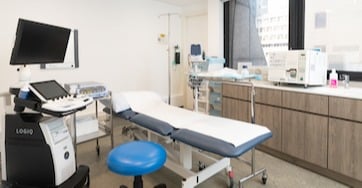According to the WHO, migraine affects 10% of the global population. Do most of us truly understand what migraines are? Lots of people may think that migraines are just really bad headaches. However, this is a dangerous and false belief. Headaches are the only symptoms of migraines. In addition, migraines are not only painful but can disrupt your day-to-day activities as well. We must know the causes, symptoms and treatment of migraines, how to differentiate them from your regular headaches and when to see a doctor.
What is a Migraine?
Regarding symptoms, most people would suffer from a severe headache on one side of the head only. The throbbing sensation may worsen when people move, preventing people from engaging in their daily activities. Apart from having headaches, patients may become more sensitive to light and sound, feel nauseous or even vomit.
Migraines usually have four stages — Prodrome, Aura, Attack and Post-drome, although not everyone experiences all.
Prodrome
Prodrome refers to the one or two days before a migraine, where patients may experience symptoms such as constipation, mood changes or food cravings.
Aura
Auras are temporary nervous system symptoms and may present before or during migraines. For example, patients may have vision loss or observe bright spots and flashes of light. Even though auras tend to be visual, they can manifest in other forms. For instance, patients may have difficulty speaking or have pins and needles in their limbs.
Attack & Post-drome
The attack phase of the migraine occurs when the headache, sensitivity to stimuli, nausea and vomiting occur. Lastly, for post-drome, patients may feel drained and confused up to a day after the migraine.
What are the causes of Migraine?
Different factors may increase peoples’ chances of migraines, but the exact cause is unknown. One of the many factors is suggested to be genetic as half of the migraine patients have a close relative with migraine as well. Migraines are also reported to be three times more common in females than in males. For females, migraines can be associated with periods. This is because, before menstruation, the level of estrogen decreases and that can also potentially cause migraines.
Certain medications, such as oral contraceptives and nitroglycerin, may also trigger migraines. High-stress levels, exposure to sensory stimuli (e.g. bright light, loud sounds or strong smells) and intense physical activity cause migraines in some people too. Finally, diet has a role to play too. Drinks, such as alcohol, in particular wine, and a large amount of coffee increases the chance of migraines. Certain food and food additives may contribute to migraine too, such as chocolate, MSG and aspartame.
How do I relieve the symptoms of a migraine?
Although there is no cure for migraines, many types of treatment are available to relieve its symptoms and to reduce the frequency of occurrence. According to the NHS, most patients find relief in sleeping or lying in a dark room during a migraine attack. In some cases, osteopathy treatment can help treat migraines. Eating a light snack may benefit some patients too. If these methods are ineffective, medications may be useful. For example, over-the-counter (OTC) painkillers, especially when taken as soon as the first signs of an attack are observed, can help the patient feel better. This includes paracetamol, aspirin and ibuprofen. However, it is important to adhere to the instructions on the packaging tightly because overuse of painkillers can cause more headaches, worsening the migraine. Patients can consider visiting a doctor for stronger medications if OTC medications are ineffective. The doctor may prescribe Triptans, which calms the overactive nerves and constricts blood vessels in the brain, reducing symptoms of a migraine. Patients often need to book a follow-up appointment with their doctor to see whether the drug is effective and to check for any side effects. Apart from Triptans, doctors may prescribe anti-emetics, drugs normally used to treat vomiting but are useful in migraines as well.
Although migraines can be terrifying and can create a lot of inconveniences, we can work with our doctors to minimize the chances of our migraine recurring or reduce the severity of the symptoms. Keeping a migraine journal may help identify patient triggers and patterns and provide more information for the doctor, increasing the chance of successfully alleviating symptoms. For more information, consult with the practitioners at OT&P today!
References
-
- National Health Service. (2019). 'Migraine.' NHS. 10 May 2019. Available at: <https://www.nhs.uk/conditions/migraine/>[Accessed 4 July 2022].
- Mayo Clinic. (N/A). 'Migraine' South China Morning Post. Available at: <https://www.mayoclinic.org/diseases-conditions/migraine-headache/symptoms-causes/syc-20360201>[Accessed 4 July 2022].
 Central General Practice
Central General Practice
 Repulse Bay
Repulse Bay
 Clearwater Bay
Clearwater Bay
 BodyWorX Clinic
BodyWorX Clinic
 Central Specialist Clinic
Central Specialist Clinic
 MindWorX Clinic
MindWorX Clinic
 Partner Clinics
Partner Clinics
 Family Clinic
Family Clinic
 OT&P Annerley Midwives Clinic
OT&P Annerley Midwives Clinic







